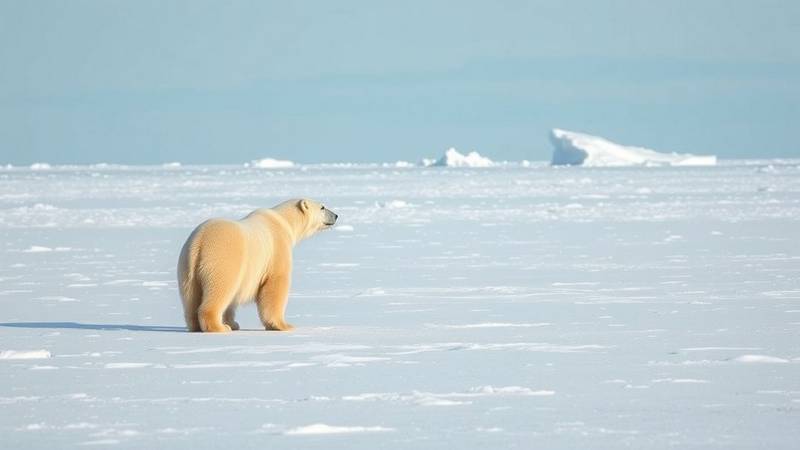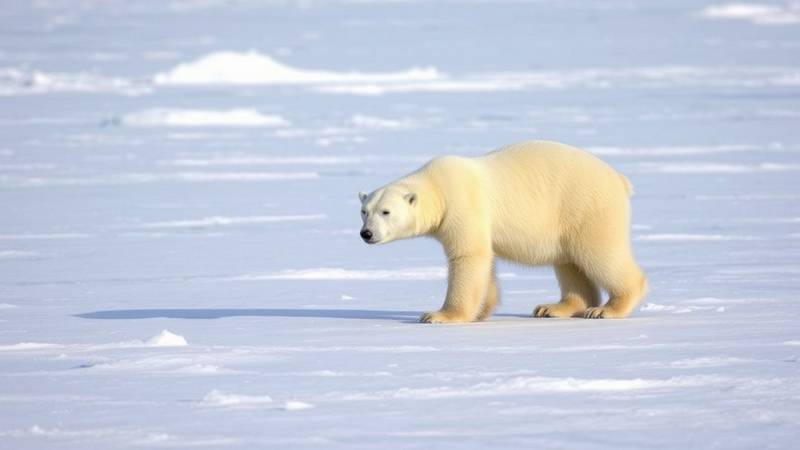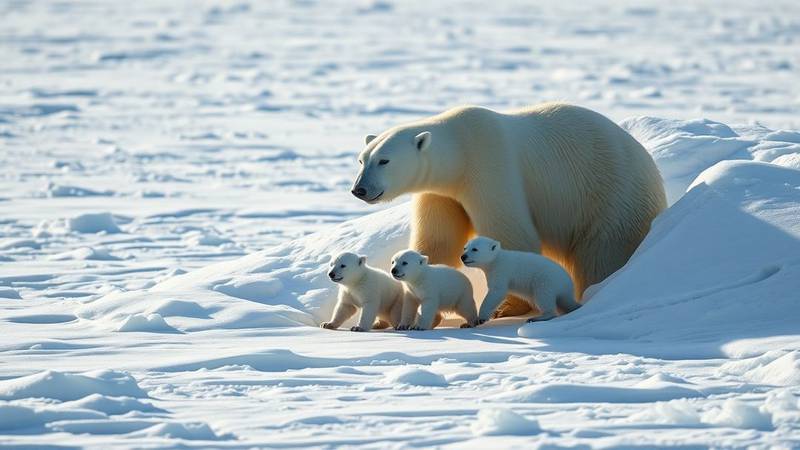The Polar Bear's Realm: An Arctic Habitat Overview
The polar bear (Ursus maritimus) is a highly specialized marine mammal, uniquely adapted to life in the harsh, icy environment of the Arctic. Their habitat is intrinsically linked to the presence of sea ice, which serves as their primary platform for hunting, traveling, and often mating. Understanding their specific habitat requirements is crucial for appreciating their vulnerabilities in a rapidly changing world.

From the expansive frozen ocean to coastal land areas used for denning, the polar bear's habitat is a dynamic and demanding landscape that dictates every aspect of their lives.
Geographic Range: Where Do Polar Bears Live?
Polar bears are found throughout the circumpolar Arctic, inhabiting regions in five main countries: the United States (Alaska), Canada, Russia, Greenland (Denmark), and Norway (Svalbard). Their distribution is not uniform but is concentrated in areas where sea ice is present for a significant portion of the year, particularly over the productive continental shelf and inter-island archipelagos.
Scientists divide the global polar bear population into 19 distinct subpopulations based on genetic and movement data. While some interchange occurs between these populations, many are relatively discrete. Their range is limited by the southern extent of sea ice, and they are rarely found far from it, except during denning or when ice-free conditions force them ashore.
Countries
USA, Canada, Russia, Greenland, Norway
Subpopulations
Distinct management units
Key Habitat Feature
Essential for hunting and survival
Primary Environment
Coastal and offshore ice zones
The Crucial Role of Sea Ice in Polar Bear Habitat
Sea ice is the cornerstone of the polar bear's habitat and survival. It's not just frozen water; it's a dynamic platform that provides:
- Hunting Grounds: Polar bears primarily hunt seals (ringed and bearded seals are favorites) by waiting near their breathing holes in the ice, or by stalking them on the ice surface when they haul out to rest.
- Travel Corridors: Sea ice allows polar bears to travel vast distances in search of prey and mates.
- Mating Platform: Mating often occurs on the sea ice in spring.
- Resting Areas: Bears use the ice to rest and conserve energy between hunts.
The type and condition of sea ice are important. Polar bears prefer areas with annual ice that melts and refreezes, as these areas are more productive and attract more seals. They tend to avoid very thick, multi-year ice with few seal breathing holes or vast expanses of open water where hunting is difficult.

Life on the Edge: The Sea Ice Ecosystem
The entire Arctic marine food web, upon which polar bears depend, is built around sea ice. Algae grow on its underside, feeding zooplankton, which in turn feed fish, which are eaten by seals—the polar bear's main prey. Without sea ice, this entire ecosystem collapses.
Maternity Dens: A Terrestrial or Ice-Based Haven
While polar bears spend most of their lives on the sea ice, pregnant females require a different type of habitat for giving birth and nursing their young cubs. This is the maternity den.
- Location: Most maternity dens are excavated in snowdrifts on land, often along coastal bluffs, riverbanks, or hillsides where snow accumulates. Some dens are also found on stable, land-fast sea ice, particularly in areas like the Beaufort Sea.
- Construction: The female digs a small tunnel leading to one or more chambers. The snow provides excellent insulation, keeping the den significantly warmer than the outside Arctic air.
- Timing: Females enter dens in the autumn (October/November) and give birth to cubs (typically one to three) in mid-winter (December/January). They remain in the den, fasting and nursing the cubs, until spring (March/April).
The availability of suitable denning habitat, with sufficient snow accumulation and minimal disturbance, is critical for reproductive success. Changes in snowfall patterns and increasing human activity in the Arctic can impact denning.

Threats to Polar Bear Habitat and Conservation Efforts
The most significant threat to polar bear habitat is **climate change and the resulting loss of Arctic sea ice.** As global temperatures rise, Arctic sea ice is melting earlier in the spring and forming later in the autumn. This leads to:
- Reduced Hunting Opportunities: Less ice means less time to hunt seals, leading to poorer body condition, reduced reproductive rates, and lower cub survival.
- Longer Ice-Free Periods: Bears are forced to spend more time on land, where food is scarce, leading to starvation or increased human-wildlife conflict as they seek alternative food sources.
- Habitat Fragmentation: The remaining ice can become more broken up and further from shore, making travel and hunting more difficult and energy-intensive.
- Impact on Denning: Changes in snow conditions can affect den stability. Earlier ice break-up can also force mothers and cubs to swim longer distances to reach hunting grounds, increasing cub mortality.
Other threats to their habitat include industrial development (oil and gas exploration, shipping), pollution (persistent organic pollutants accumulating in their food chain), and overharvest in some subpopulations.
Protecting the Ice, Protecting the Bear
Conservation of polar bears is fundamentally tied to mitigating climate change and preserving their sea ice habitat. Global efforts to reduce greenhouse gas emissions are paramount. Additionally, protecting key denning areas and managing human activities in the Arctic are vital components of ensuring a future for these magnificent animals and their unique icy home.
